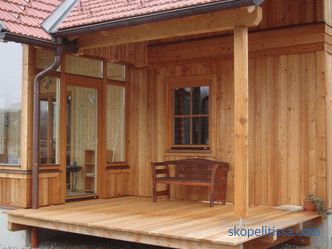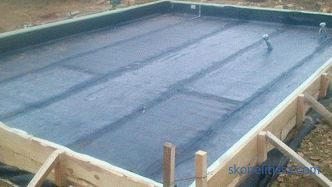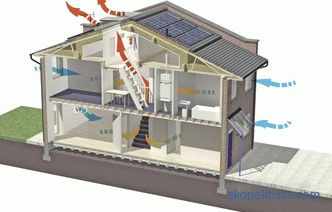What to choose for facing the facade of the house, what material is better, how long it will serve, how much does it meet the architectural features of the building and interior decoration? Perhaps these are the main issues that the owner of a private house has to decide at the final stage of construction or overhaul, when it is time to choose materials for finishing the facade of a private house.
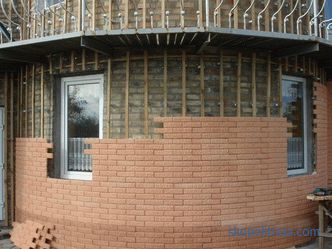
Finishing the house as a person’s clothing protects and decorates
Facade decoration, as part of a general idea - what to look for
The choice of materials for facade decoration depends on many factors. Of course, there is no universal answer to the question of how to better revet the facade of a house. Here are just the main points that need to be taken into account:
-
facade - this is the appearance of the building, giving the impression of its architectural features;
-
the exterior of the house should organically fit into the common space of the site taking into account the rest of the buildings and the landscape;
-
the style must comply with the established national traditions;
-
the design and materials of exterior and interior decoration must harmoniously complement each other and work for a common idea;
-
facing should be carried out using energy-saving technologist oh
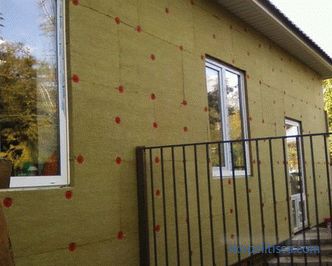
Installation of insulation is increasingly perceived as an indispensable part of the finishing work
And the main task that needs to be solved - to meet the specific budget framework.
Classic style
There are some classic finishing materials for the facades of private houses: brick, wood and plaster. Natural stone is also used, but the tile from it is expensive, therefore a modern analogue is more often chosen - front ceramic granite.
Brick
This finishing material cannot be called cheap from the point of view of a one-time investment.
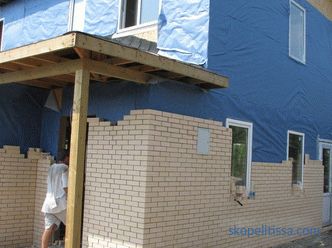
The facade finish can turn a frame house into a brick
But given the service life of decades, there is no need to repair the facade and simplicity care, the situation changes to the opposite - this is one of the most profitable types of cladding. But he also has his own hierarchy:
-
Facing ceramic brick. The most inexpensive type - single price starts from 7. 60 rub. and can reach up to 17 rubles. apiece (depending on the manufacturer and decorative texture of the front surface). The cost of 1 m2 lies within 390-850 rubles.
-
Hyper pressed brick. The price of one building block is twice as expensive as ceramic brick, but this type has its own formats, therefore it is better to compare prices per 1 m2 of masonry per half brick. A relatively inexpensive option will cost 900-950 rubles. , with a textured surface - twice as expensive.
-
Clinker bricks. The most durable, but also the most expensive type of facing brick of industrial production. If you slightly round up the prices, then 1 pc. will cost from 20 to 90 rubles. , and 1 m2, respectively, will cost 900-4300 rubles.
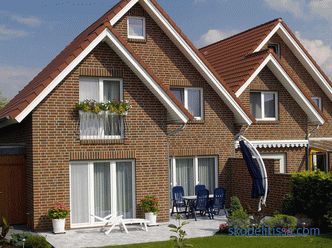
The colorful Bavarian clinker brickwork gives the house a special chic
-
Brick hand-molded. Like clinker, it is an elite material. Piece cost from 40 rubles. and higher (there are more expensive models four times lower prices). But taking into account different formats, it is better to bring the price of 1 m2, and it starts from 2100 rubles. and can reach the mark of 14,000 rubles.
The prices quoted do not take into account the cost of delivery, masonry mortar and work. And if you still carry out insulation, then you need to add on the costs for this part (although this stage is common for most facade facing technologies).
If you choose a clinker or a hand-molded brick, then there is an opportunity to save - choose a domestic manufacturer (the lower price thresholds are indicated for him). But the quality standard is products from Germany.
And in order to dispel claims about the benefits of ceramic tiles for bricks - the price of clinker tiles is almost the same as bricks, and the cost of 1 m2 of hand-made tiles can reach 8,000 rubles. And it all depends on the chosen brand. When choosing a tile, you can save only on the foundation due to the lower weight of the cladding.
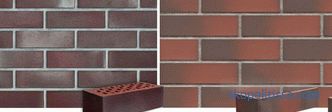
The weight of the tile is clearly less than that of a brick
On our site you can find contacts of construction companies that offer a finishing service and insulation of houses. Directly to communicate with representatives, you can visit the exhibition of houses "Low-rise Country".
Therefore, when it is necessary to choose what to veneer the facade of the house cheaply and beautifully, it is better to use domestic facing brick.
Wood
This material is also in demand for decoration of country houses in a rustic style, and for modern cottages in today's eco-style.
Therefore, "in the course" of all types of front wood panels:
-
Front paneling. It differs from interior only in thickness (14 mm and above). The cost of 1 m2 depends on the type of wood, grade and humidity. Inexpensive pine lining of natural moisture costs 170-220 rubles. , and larch class "Extra" - will cost 1200-1350 rubles. (which is comparable to the cost of domestic clinker brick). The width of the panel also influences the price of the unit of area - narrow lining costs less.
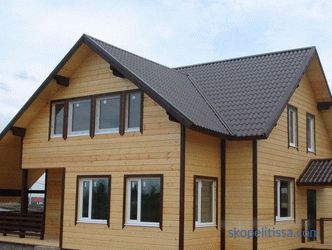
House clapboard trim is one of the most inexpensive and attractive options
-
Imitation timber. This is practically the same lining of the “standard” type (with a chamfer), but thicker. The minimum price of 1 m2 of pine varieties "Sun" is 220 rubles. (with a thickness of 18 mm), and for the class "A" and the thickness of 21 mm will have to pay one and a half times more. A panel of larch with a thickness of 20 mm will cost 800 rubles. / m2 (class "AB") and 1400 rubles. / m2 (class "Extra").
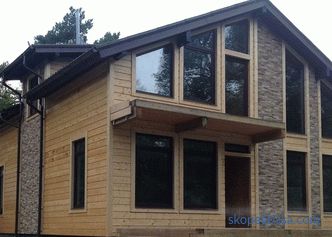
There are practically no external differences from an ordinary clapboard in imitation of a timber
-
Block house. The difference from lining is a rounded surface “under the log” (imitation of a log house). Pine thickness of 27 mm and a width of 135 mm will cost around 300 rubles. / m2 ("BC"), thickness 45 mm and width 230 mm - 650-750 rubles. / m2 ("A"). The same block of larch houses costs an average of 2. 5 times more expensive.
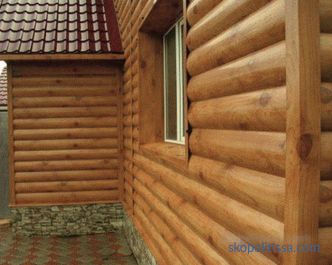
The block house imitates the wall of the log house
It might be interesting! In the article on the following link read about facing the house with a brick.
-
Planken. Another type of wallboard, but without fastening the thorn-groove between them. It happens with a slanting and straight profile, and the most characteristic difference is the gap between the panels. It is approximately the same as imitation timber.
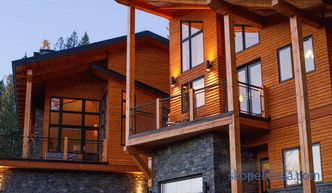
Plancken fits perfectly into modern architectural style
Plaster
It is the most inexpensive view of the facade finish. But even here there are their own "economy" and "extra" classes:
-
Mineral facade plaster based on cement, lime and mixtures thereof. The simplest type of leveling plaster costs from 220-250 rubles. per bag of dry mix weighing 25 kg. With a consumption rate of about 12-15 kg per 1m2 (with a layer thickness of 10 mm), it is necessary to spend only 110-120 rubles per "area unit". Plus primer, work and exterior paint.
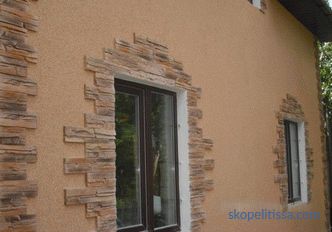
Example of finishing with mineral facade plaster
-
Mineral decorative plaster . If you plaster in two layers - basic and decorative, then they also use plaster of the type "fur coat", "bark beetle" or "pebble". A bag of 25 kg is worth 360-800 rubles. , but at the expense of a thin layer, consumption is less - from 2. 5 kg to 4 kg per 1 m2, and this will increase the price by another 60-120 rubles / m2. Total for all materials for inexpensive finishing of the facade of the house of mineral plaster need to spend about 250-400 rubles. / m2. But these are prices of domestic manufacturers, “foreign” decorative plaster can cost at least 3 times more expensive.
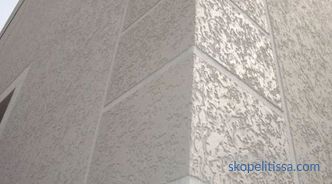
Bark beetle plaster is always in stock with any type of binder
-
Acrylic plaster. Sold in finished form or diluted to the required consistency with water. Consumption from 1. 5 to 3. 5 kg / m2 (the thinnest layers can be applied even with an airbrush). Depending on the weight of the packaging, 1 kg of domestic plaster costs 70-90 rubles. Taking into account the consumption, the cost of finishing materials is in the range of 100-300 rubles / m2. Plus, you need to add the cost of leveling a layer of mineral plaster, primer, work and paint.
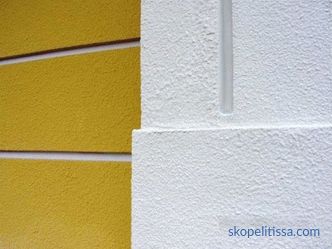
Acrylic facade plaster looks good not only in one color, but also at their combination
-
Silicate plaster. Ceresite in terms of a kilogram costs 100-120 rubles. that at a consumption rate of 3-3. 5 kg / m2 determines the cost of finishing coating materials at the level of 300-400 rubles. / m2 (but this is not a pure silicate binder, but in combination with silicone resins). And it is more expensive than finishing with acrylic plaster. If you choose a mixture of imported, the cost of finishing is doubled.
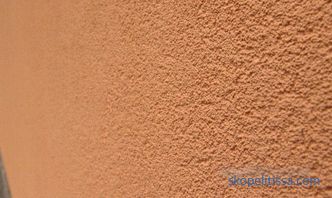
Silicate plaster with a rough surface is not afraid of temperature drops and high humidity
-
Silicone plaster. If you do not take into account the "hybrid" Ceresite and mixtures with a binder in combination with acrylic polymers, then in its pure form the most inexpensive facade silicone plaster in terms of a kilogram costs at least 150 rubles. , and on average - about 200 rubles. Consumption, like other decorative coatings, depends on the grain size of the filler (layer thickness), and can lie in the range of 2. 5 to 4 kg / m2. Therefore, this type is the most expensive - the cost of the finishing coating is 350-800 rubles / m2, and this is already comparable to the price of facing the domestic ceramic brick.
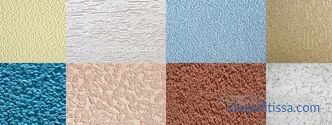
The colors and textures of the silicone plaster allow you to match it with any artistic design
Siding
This is the general name for an entire group of materials, which differ in the material of manufacture and operational characteristics. Many factors influence the pricing, and the range of prices even in one category is very large. Therefore, the statement about the low cost of this type of finish is not entirely correct. Although there is a certain hierarchy here, and the question arises how to decorate the facade of the presented siding types:
-
Vinyl wall siding. The price of domestic manufacturer products starts from 165 rubles. / m2 and comes to 500 rubles. / m2 (and this with the same thickness 1. 1 mm). For import siding will have to pay twice as much - up to 1000 rubles. / m2.
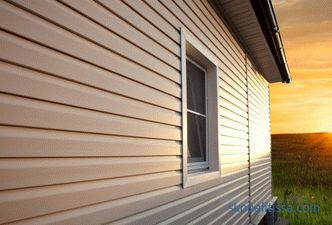
Vinyl siding is inexpensive and aesthetically pleasing
-
Vinyl basement siding. It differs from the wall with greater thickness and high mechanical strength. Therefore, the domestic manufacturers price starts from 470 rubles. / m2 and comes to 1300 rubles. / m2. To buy imported siding, you have to pay 1000-2000 rubles. more.
You can clearly see the vinyl siding on the video:
-
Metal siding. If we talk about the price, it is not much more expensive than vinyl wall siding. Moreover, the cost is influenced not so much by the origin as by the thickness of the metal and the type of coating. But in any case, the range of prices is not so significant. For example, domestic siding with a thickness of 0. 4 mm with a polyester coating costs from 260 rubles. / m2, and the Finnish siding thickness of 0. 5 mm and covered with pural will cost 800 rubles. / m2.
Metal siding can be performed in many textures, including wood. Video example:
-
Fiber cement siding and WPC (wood-polymer composite) cladding board . Approximately the same cost materials - 1000-2000 rubles. / m2. The main reason for the high cost is import. But if you compare with foreign vinyl basement siding, then this is the same price category.
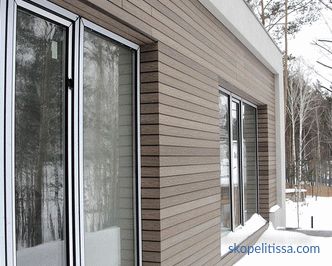
WPC siding does not visually differ from natural wood planken, but will last much longer
If the task is to inexpensively finish the facade of the house, then domestic-made vinyl or steel siding as part of a curtain wall is the best option. Although here you will need additional costs for accessories (up to 30% of the cost of panels).
It might be interesting! In the article on the following link read about the modern cottage with cedar trim.
Conclusion
The most popular types of facade decoration are given. In principle, in each category there are options that allow you to meet 500 rubles. at the price of materials per square meter. And you just need to decide which of them best suits the architecture of the house, the landscape and interior decoration.
Rate this article, we tried for you
